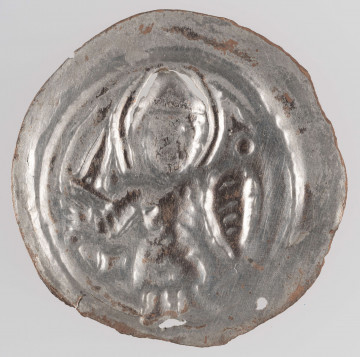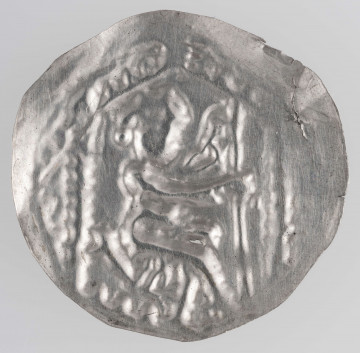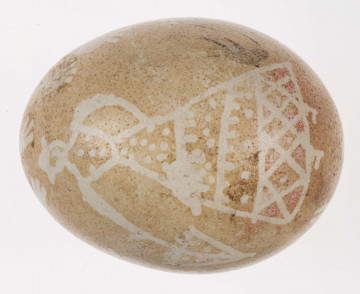
Bracteate with Saint Maurice
1190 — 1210
National Museum in Lublin
Part of the collection: Money on Polish territory in the Middle Ages
The division of the territory of the Polish state between Bolesław the Wrymouthed's sons in 1138, with supreme authority vested in the eldest, did not prevent a dynastic conflict. Assassinations of district members of the Piast dynasty on the Kraków princely throne (1146, 1177) led to a weakening of the central authority, which in the atmosphere of social and economic transformations transferred some of its powers, including the right to issue currency, to local princes and magnates. The beginnings of local minting are linked to the end of the senior reign of Mieszko III (1177) and the independence of the district princes. Apart from Bolesław the Wrymouthed’s two living sons – Mieszko († 1202) and Casimir († 1194) – minting activities were undertaken by the Wrymouthed's grandsons – Bolesław († 1201) and Mieszko († 1211) in Silesia, Odon Mieszkowic († 1194) in Greater Poland, Leszek Bolesławowic († 1186) in Mazovia and probably two sons of Mieszko the Old – Mieszko the Younger († 1194) and Bolesław († 1195). The persistent political divisions in the 13th century maintained the monetary division of the country. A significant part of the coins produced after 1177 are difficult to connect with a specific reign and the attribution of some of them is uncertain. The texts on the coins do not allow to identify the issuer and to date them precisely, and the names sometimes appearing on them do not always indicate the person of the actual prince. That concerns one-sided brakteate denars (Latin bractea – thin sheet), which, in contrast to coins struck with the obverse and reverse stamp, provide less information. The years after 1177 are referred to as the ‘dark age’ of Polish numismatics.
The discussed coin is an example of an anonymous bracteate issue from the turn of the 12th and 13th century, formerly attributed to Przemysł I, Duke of Wielkopolska († 1257). We can see on it two figures sitting side by side behind the table, wearing helmets and spiked armour. Due to a defect one of the knights is not visible on this copy. The scene should be interpreted as a pictorial representation of the agreement between the princes. The connecting element between the figures is the table, a place not only for feasting, but above all for peaceful conversations.
Tomasz Markiewicz
Author / creator
Dimensions
cały obiekt:
Object type
numismatic
Technique
stamp minting
Material
silver
Creation time / dating
Creation / finding place
Owner
The National Museum in Lublin
Identification number
Location / status

1190 — 1210
National Museum in Lublin

1190 — 1210
National Museum in Lublin

1901 — 1920
National Museum in Lublin
DISCOVER this TOPIC
Castle Museum in Łańcut
DISCOVER this PATH
Educational path